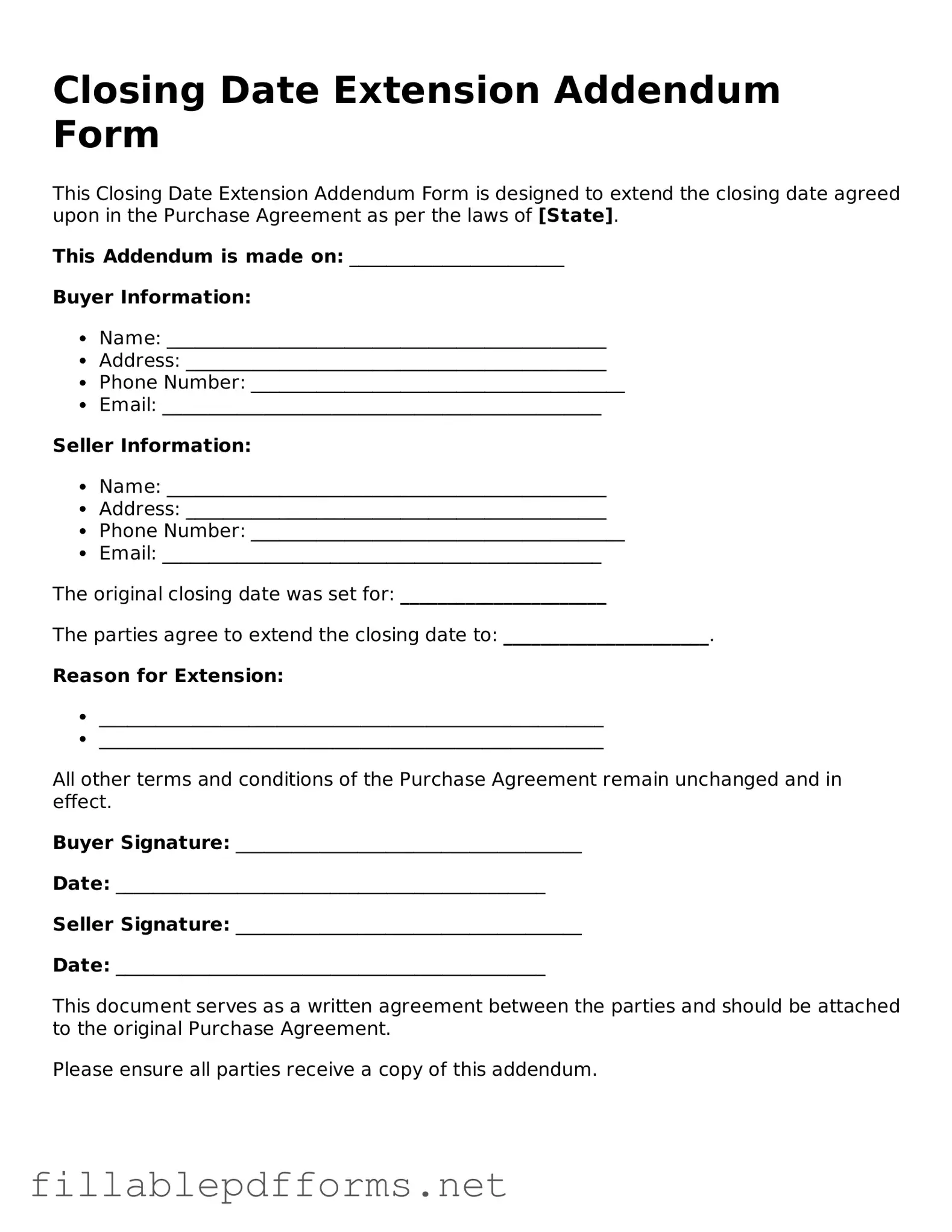Blank Closing Date Extension Addendum Form Template
The Closing Date Extension Addendum Form is a document used in real estate transactions to modify the original closing date agreed upon by the parties involved. This form allows for an extension of the closing date, accommodating unforeseen circumstances that may delay the completion of the sale. Properly completing this form ensures that both buyers and sellers are aligned on the new timeline for closing the transaction.
Launch Editor Here
